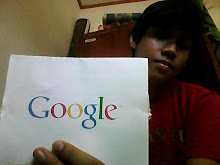England's five-wicket hero Tim Bresnan, right, celebrates taking the wicket of Harbhajan Singh with Kevin Pietersen. Photograph: Tom Shaw/Getty Images
India's claim to be the foremost Test match side in the world lay in tatters in Nottingham on Monday evening. Defeat, by a huge margin of 319 runs with more than a day to spare – by a country mile the most humiliating they have suffered at the hands of England – followed their 196‑run loss in the first Test at Lord's. In the aftermath of that it was said they were slow starters and would pick up the pace.
A reassessment might be in order now, for this was little short of slaughter. England, who have not lost any of eight Test series and only four of 29 matches in more than two years since Andy Flower has been in full charge of the team, lead by two matches to nil in the four‑match series and have their eyes firmly on the official No1 ranking. Only the most fervent Indian optimist, of which there are many, will believe that their team can recover from this.
England had begun the day in the ascendant, already with a lead of 379, almost certainly secure enough in itself, but added a further 103 in 19 overs in the morning, with Tim Bresnan making 90, thus setting India a notional 478 to win. They did not have a chance, for the new ball has proved dangerous throughout the game and England had the extra pace to exploit it. Inside 26 overs, two of the galácticos were gone for single figures, Rahul Dravid to Stuart Broad and VVS Laxman castled by an irresistible delivery from Jimmy Anderson and India were 55 for six, with Bresnan, the indefatigable Yorkie dreadnought, bustling in on Yorkshire Day, having dismissed the India captain, Mahendra Singh Dhoni, first ball to stand on the verge of following Broad with the second hat‑trick of the match. It did not happen but Bresnan still managed to take five for 48, his best Test figures, and with his robust batting ensured that a few cats have been set among the selectorial pigeons when it comes to the third Test in Birmingham which begins a week on Wednesday.
Bresnan has now played eight Tests and won them all, a 100% record bettered in the game's history only by the West Indian Eldine Baptiste, who played in 10 winning sides.
Only Sachin Tendulkar, batting flawlessly for two and a quarter hours while things tumbled around him, showed the technique and resolve to cope. But having made 56 he misjudged Anderson and was lbw offering no shot, the seventh time that the bowler has dismissed Tendulkar, just one behind the eight of Muttiah Muralitharan.
Beyond that Harbhajan Singh, in the middle of Broad's hat‑trick and preventing Bresnan's on Monday, threw the bat for 46, made with such vigour at times that it raised eyebrows as to the state of the damaged stomach muscles that prevented him from bowling during the England mayhem.
India, should they need it, can console themselves with the knowledge that they have twice been beaten by a team of astonishing depth and resilience. Twice Dhoni was won an important toss this series and put England under pressure and twice England have responded. On Friday, as the ball swung and seamed under leaden skies, they found themselves 88 for six, before Broad and the lower order rescued them. Then, on the second day, in better conditions, when Dravid's brilliance had helped take India to 267 for four, a lead already of 46, Broad conjured up his hat‑trick in a spell of five wickets at no cost. It shattered India. Thereafter, they were not in the game as England battered an inadequate attack into submission. In four innings now India have a top score of 288.
India now need desperately to regain some equilibrium but it is hard to see whence it will come. Virender Sehwag is expected to arrive in England on Tuesday but he has only one game against Northamptonshire this week in which to prepare.
The recovery of Zaheer Khan, should he get over his hamstring strain, will help but is not a game changer, and Gautam Gambhir, who in any case did not appear unusually discomfited in the nets before the game, ought to have recovered from his bruised elbow.
On the other hand, Harbhajan, taker of more than 400 Test wickets, has had such a miserable series with the ball – two for 287 thus far – that there is a strong case for him making way for the leg‑spinner Amit Mishra. On Monday, Yuvraj Singh suffered a nasty blow on his left index finger, from Bresnan, that may cause further problems. It is not just mentally that they are battered and bruised.
As with Lord's, though, England have not escaped the match entirely unscathed. The shoulder wrenched by Jonathan Trott while in the field on the second day had eased sufficiently for him to bat, and he now has a week of intensive treatment in which to get fit again with any replacement likely to be either Ravi Bopara or the new Lions captain, James Taylor, who has a chance to impress this week.
Monty Panesar would be a top‑class replacement for Graeme Swann should his injured hand not recover. But the pace bowling goes round in circles. Never give a sucker an even break, said WC Fields, but that is what Chris Tremlett's back and hamstring niggle has done with Bresnan. Anderson is the second‑ranked bowler in the world, Broad's comeback speaks for itself, and Bresnan has taken his first Test five-for and contributed 101 runs. Who would want to call that one?
Source :
www.guardian.co.uk















































